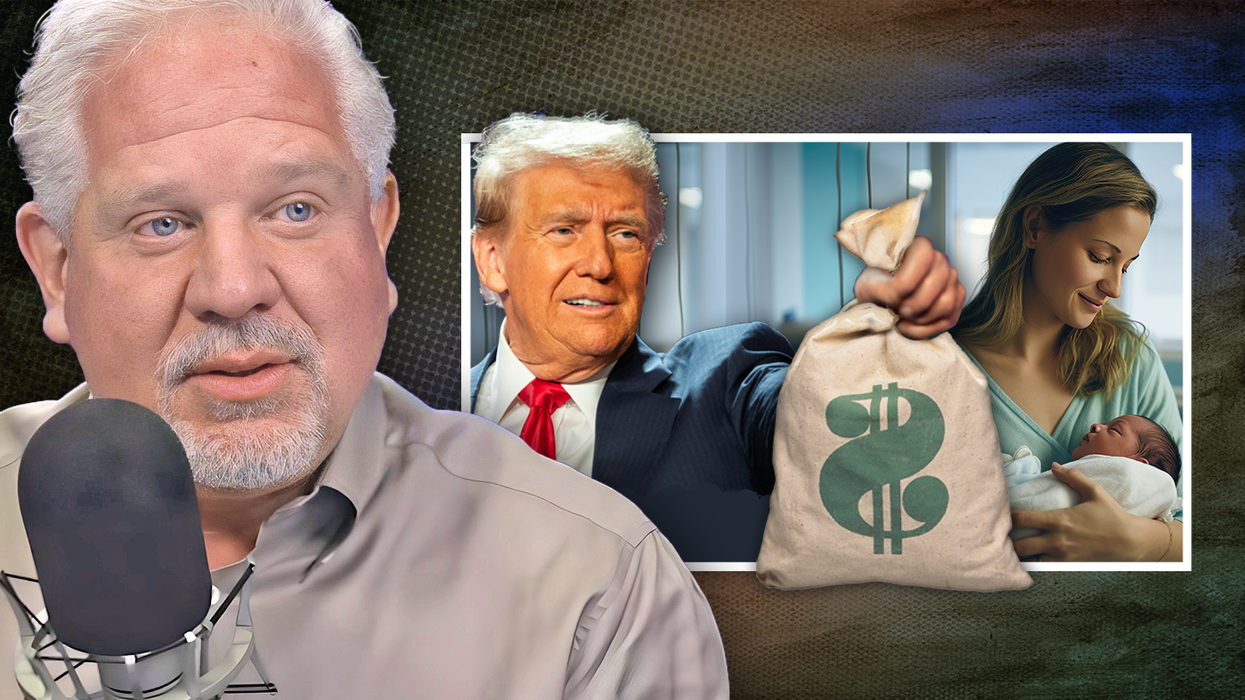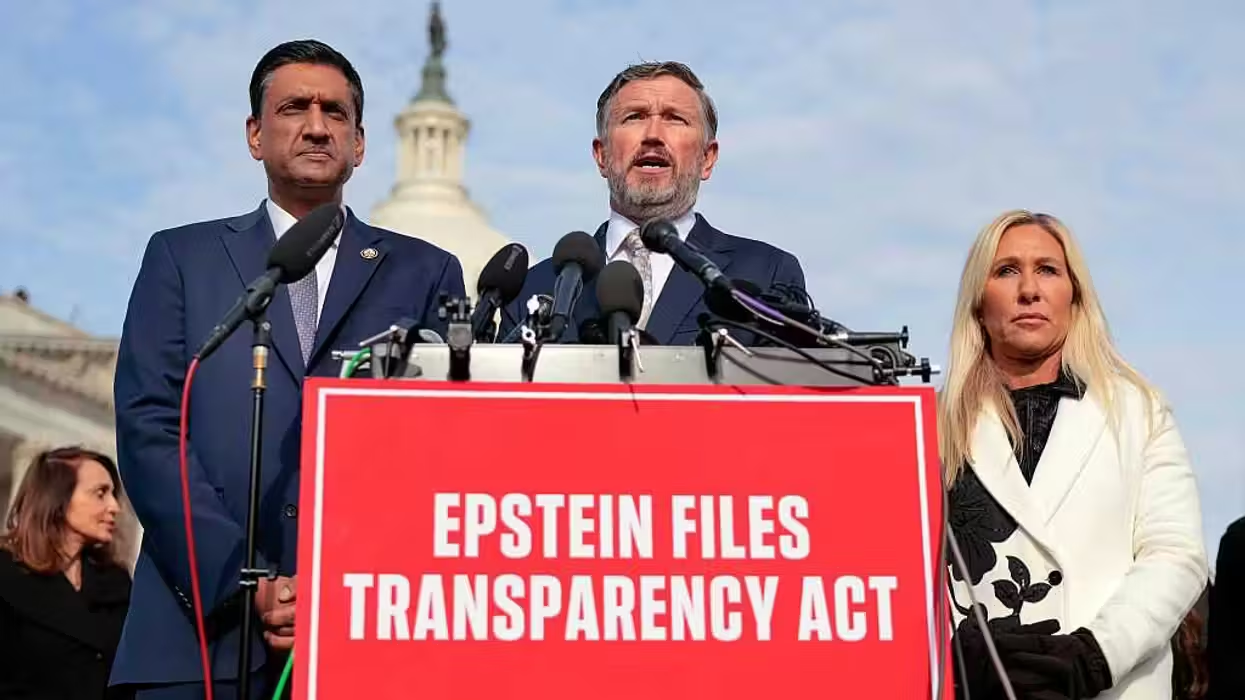
© 2025 Blaze Media LLC. All rights reserved.
 Treasury Department (AP)
Treasury Department (AP)
This is the third in series of columns from Americans for Prosperity contributors focusing on the federal budget proposals in Congress. The first post focused on Chairman Ryan’s plan, the second post focused on the Senate Democrats’ plan, and subsequent posts will focus important differences between the two plans.
Although they have a few similarities, Chairman Paul Ryan and Chairman Patty Murray present two very different visions for the nation’s finances in their budgets. Here is a closer look at the different approaches to tax policy in the two budget proposals that came out this week.
OVERALL TAX REVENUES
Ryan’s plan is revenue neutral, as discussed yesterday, meaning that it is not an overall tax hike. Senate Democrats say in the Chairman’s Mark that their budget includes “only” $923 billion in higher taxes over the next 10 years, but it turns out to be much higher. Buried elsewhere in their budget is $580 billion in additional tax hikes, bringing the total to $1.5 trillion.
Chairman Ryan’s plan would use the revenue coming from eliminating loopholes (described below) to bring down tax rates. The Senate Democrats’ plan would use the revenue to fuel higher levels of federal spending. By only removing deductions and refusing to lower rates, Murr.ay’s budget represents a massive tax hike on American families and businesses.
The plans share a disappointing similarity: Each relies on the $620 billion in higher taxes that kicked in after January’s fiscal cliff deal, which AFP opposed.
Comparison of Tax Increases in Ryan’s and Senate Democrats’ Budgets (FY 2014-2023) | Create infographics
TAX REFORM FRAMEWORK
Both budgets call for comprehensive tax reform, but they disagree on what that should look like. Chairman Ryan proposes simplifying and streamlining the tax code, highlighting the “maze” of deductions, credits, limitations, and phase-outs that clutter the tax code. He also calls for rate reduction, on both the personal and corporate side. Unfortunately, he does not attempt to abolish the death tax.
Representing a different vision, Senate Democrats want to “restore fairness to the tax code” by making it even more progressive. They recommend making certain tax credits for low- and middle- income families permanent, and eliminating or reducing tax credits and deductions that benefit top earners and businesses. They refuse to even consider lowering rates in exchange for eliminating deductions for high-earners. This results in a massive tax hike that will harm economic growth and slow job creation.
ELIMINATING LOOPHOLES
Although both plans call for eliminating loopholes, both are woefully short on specifics. Neither dives into the details of which deductions should be cut. Chairman Ryan leaves room for the House Ways and Means Committee’s upcoming work on tax reform, under the leadership of Chairman Dave Camp.
Similarly, the Senate Democrats punt the problem to the Senate Finance Committee to figure out. The only specific “wasteful business tax loopholes” they identify are changing the depreciation rules for corporate jets (which would save a measly $3 billion over 10 years) and increasing taxes on hedge fund managers (which is currently appropriately taxed as capital gains).
PERSONAL INCOME TAX
Chairman Ryan proposes to simplify our broken tax code by turning our seven individual income tax brackets into two, and then bringing down the marginal tax rates to 10% and 25%. He would also repeal the Alternative Minimum Tax, which tries to block top earners from using the same deductions as everyone else. (For more background, check out this memo on AMT from Americans for Prosperity Foundation.)
Murray’s budget doesn’t lower personal income tax rates. Instead, her plan takes a cue from the fiscal cliff deal that marked the start of 2013. She proposes permanently extending the American Opportunity Tax Credit, which is focused on higher education; she also proposes “temporary enhancements” to the Earned Income Tax Credit and Child Tax Credit.
CORPORATE INCOME TAX
Chairman Ryan would cut the top corporate tax rate to 25 percent, but Murray’s budget would leave it untouched. AFP supports cutting the corporate tax rate—which is currently the highest in the industrialized world, at 35 percent—since low rates is a principle of optimal taxation and it would produce myriad positive results for the economy. According to a brand-new study from Tax Foundation, cutting the federal corporate tax rate to 25 percent would incite economic growth, more wages and job creation, and higher tax revenue.
Another change that Ryan includes but Murray excludes is switching to a territorial tax system. This will make the tax code more competitive internationally. Currently the U.S. enforces a worldwide tax system, which discourages companies from bringing their capital back home from abroad. (Here’s a memo from AFPF that further explains the issue.) Murray’s budget continues the draconian practice of punishing U.S. companies who dare to take the profits of their overseas capital and invest it in the American economy. This harms economic growth and it’s unfortunate that Murray’s budget fails to even address this problem.
INVESTMENT TAXES, ESTATE TAXES
Ryan highlights the current high taxes on investment income—capital gains and dividends—as a challenge, but he doesn’t lay out a solution. He also fails to address the death tax. Again, he pushes this this problem to the House Ways and Means Committee to figure out.
Similarly, the Senate Democrats’ budget doesn’t make any changes to the capital gains tax rate or the dividends tax rate.
HEALTHCARE TAXES
Chairman Ryan’s budget does not repeal the damaging new taxes included in the President’s health care law. The revenue baseline for Ryan’s budget is left unchanged, which means that whatever changes he instructs Ways and Means to make to the code, he wants the end result to be revenue neutral in both a positive and negative sense. In other words, even if Ways and Means does remove the specific health care taxes they’re still going to keep the money and use it elsewhere in their tax reform package.
The Senate Democrat plan, predictably, also keeps these harmful taxes intact.
Related Contributions:
Want to leave a tip?
We answer to you. Help keep our content free of advertisers and big tech censorship by leaving a tip today.
Want to join the conversation?
Already a subscriber?
more stories
Sign up for the Blaze newsletter
By signing up, you agree to our Privacy Policy and Terms of Use, and agree to receive content that may sometimes include advertisements. You may opt out at any time.
Related Content
© 2025 Blaze Media LLC. All rights reserved.
Get the stories that matter most delivered directly to your inbox.
By signing up, you agree to our Privacy Policy and Terms of Use, and agree to receive content that may sometimes include advertisements. You may opt out at any time.






